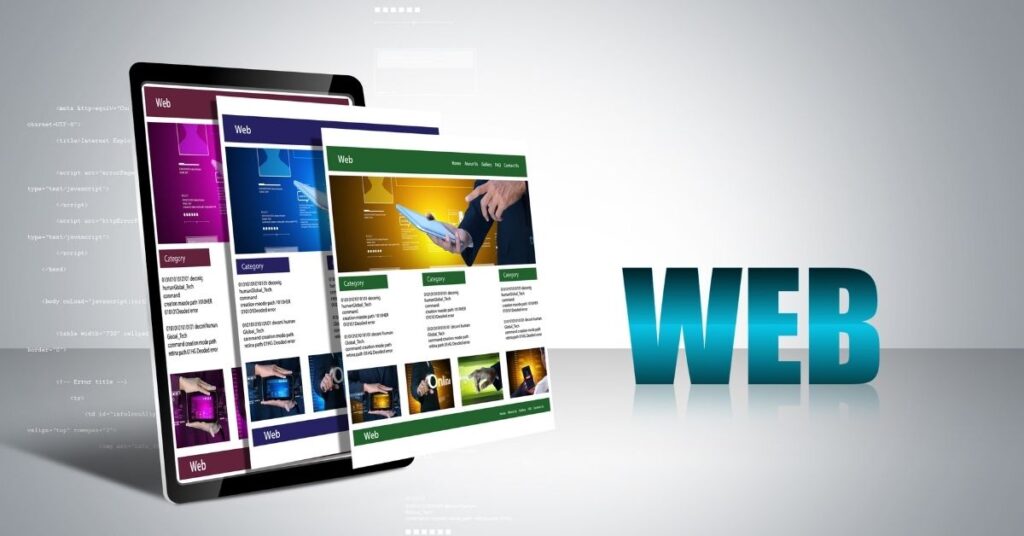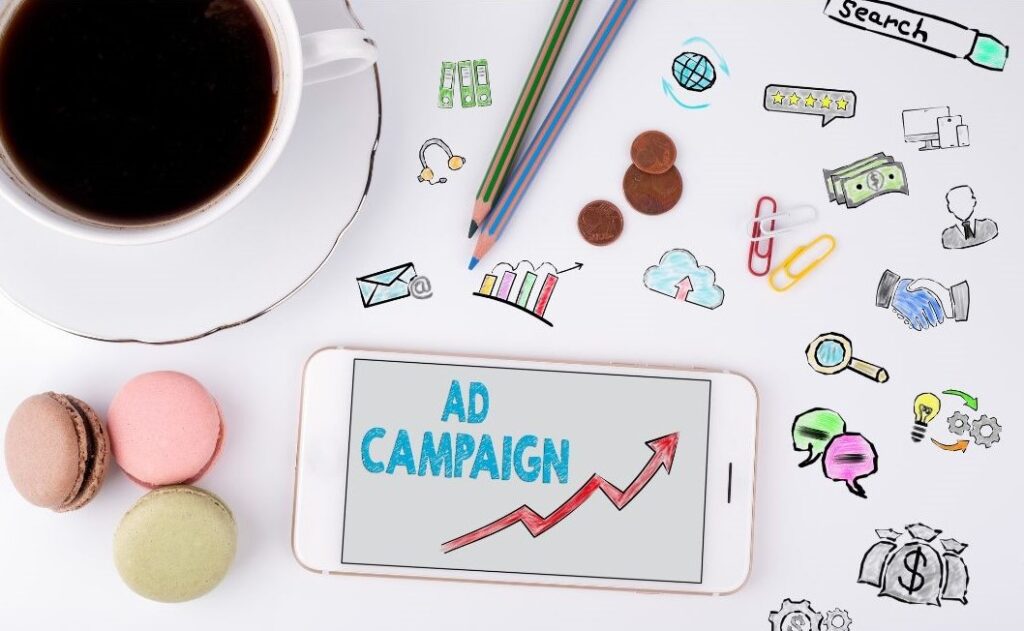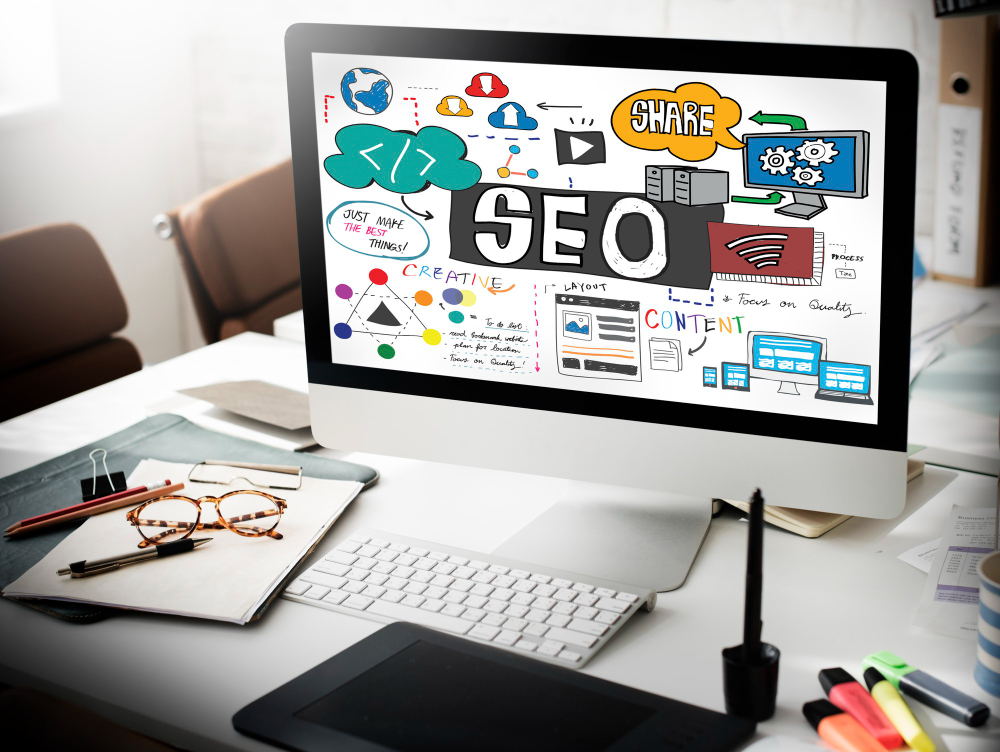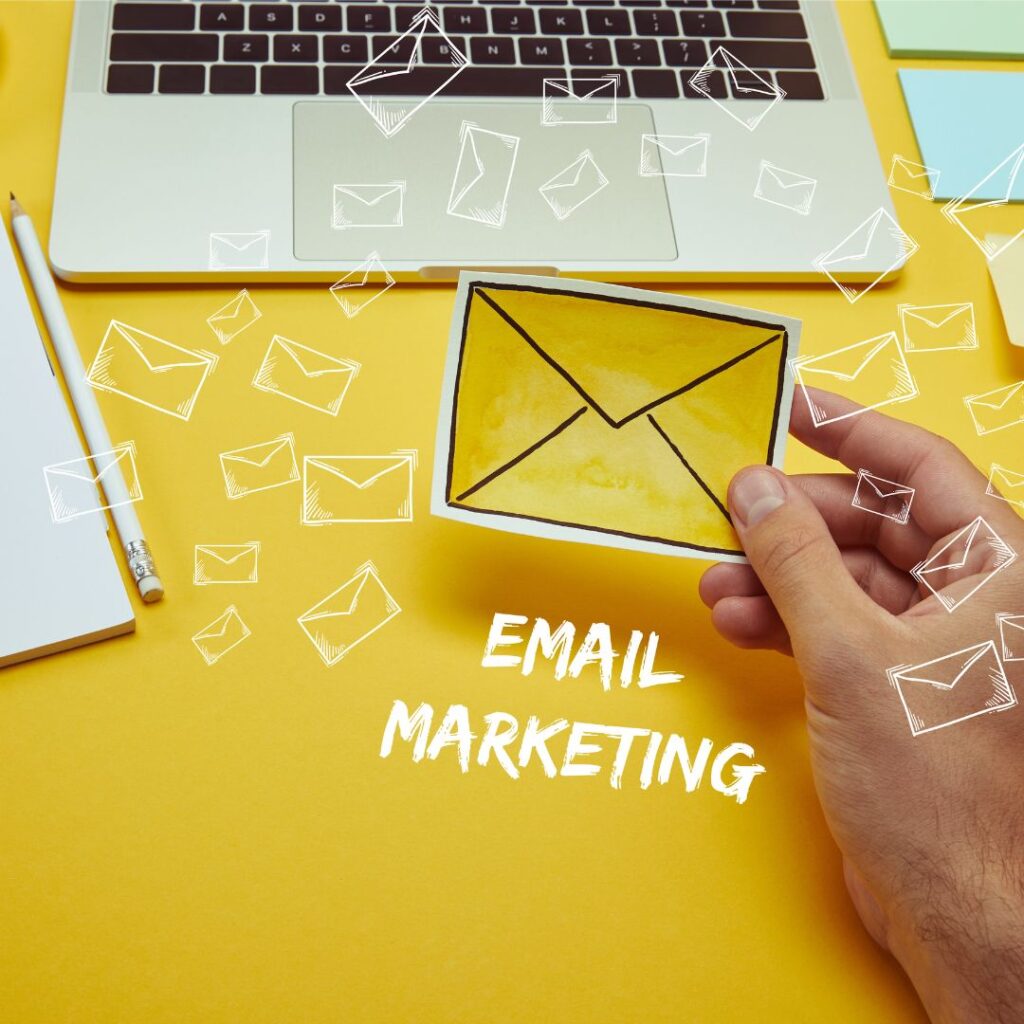Are you looking to elevate your online presence and drive more targeted traffic to your website? Pay-Per-Click (PPC) advertising may be the answer. PPC is a powerful tool that can quickly put your business in front of potential customers exactly when they’re searching for what you offer. But what is PPC, and why should it be a key part of your digital marketing strategy?
Navigating the digital marketing landscape can feel overwhelming, with countless options like SEO, social media, and email marketing vying for your attention. That’s where PPC shines, offering an immediate and effective way to boost your visibility and attract the right audience.
Pay-Per-Click Advertising Key Takeaways:
- Instant Visibility: Pay per click advertising can place your business at the top of search engine results almost instantly, unlike SEO, which takes time to build traction.
- Targeted Reach: With PPC, you can precisely target your audience by demographics, location, and even time of day, ensuring your ads reach those most likely to convert.
- Budget Control: PPC allows for flexible budgeting—you control how much you spend daily, ensuring your advertising efforts align with your financial goals.
- Measurable Results: Every aspect of your pay per click advertising campaign is trackable, allowing you to monitor clicks, conversions, and ROI, and refine your strategy for better results.
- Local Advantage: For local businesses, PPC offers a unique advantage by enabling you to target ads specifically to your community, driving more relevant traffic to your doorstep.
- Strategic Start: Begin your pay per click advertising journey with clear goals, thorough keyword research, and a well-designed landing page to maximize the effectiveness of your campaigns.
Why Pay Per Click Advertising?
In today’s hyper-competitive market, simply having a website isn’t enough. You need to get noticed, and fast. PPC advertising offers an efficient and cost-effective way to do just that. Imagine if every click on your ad brought a potential customer right to your virtual doorstep. Exciting, right?
Here’s why you should be excited:
- Instant Visibility: Unlike SEO, which can take months to show results, PPC ads can catapult your business to the top of search engine results almost instantly.
- Targeted Reach: With pay per click, you can target your ads to specific demographics, locations, and even time slots. This means you’re reaching the people who are most likely to be interested in what you offer.
- Budget Control: You decide how much you want to spend. Whether it’s $10 a day or $1000, you have full control over your budget with PPC.
The Local Angle
Being a local business gives you a unique advantage when it comes to pay per click advertising. People in your community constantly search for services and products you offer. By targeting your ads to specific keywords, you can ensure that your business appears right when it’s needed the most.
For example, if you run a bakery in Roseville, targeting keywords like “best Roseville bakery” or “fresh bread Roseville” can direct local searchers straight to you.
A Friendly Piece of Advice
Starting pay per click advertising can feel a bit overwhelming, but don’t worry. Take it one step at a time. Begin by understanding your audience and setting a clear goal. Are you aiming to increase web traffic, generate leads, or drive sales? Your objective will shape your entire PPC strategy.
Remember, it’s not just about spending money to get clicks; it’s about making those clicks count. Quality over quantity is key.
Basics of PPC Advertising
Let’s break down the fundamentals of Pay-Per-Click (PPC) advertising in a way that’s easy to grasp and—dare we say it—fun!
What is Pay Per Click Advertising?
In the simplest terms, pay per click advertising is like renting a billboard on the internet. Instead of paying a one-time fee, you pay a small amount every time someone clicks on your ad. This model ensures that you only spend advertising dollars when your ad is doing its job—getting noticed!
Key Components of a PPC Campaign
- Keywords: These are the terms or phrases that users type into search engines. Choosing the right keywords is crucial because they determine when your ads will appear.
- Ad Copy: This is the text that appears in your ad. It needs to be compelling and relevant to entice users to click on it.
- Landing Page: The page on your website where users land after clicking your ad. Your landing page should be directly related to the ad content and offer value to the visitor.
- Bid Amount: The amount you’re willing to pay for each click on your ad. This can be managed manually or set to automatic bidding based on your budget and goals.
Pay Per Click Platforms

There are several platforms you can use for PPC advertising. The most popular ones include:
- Google Ads: The big cheese of PPC. Google Ads offers a vast reach and a comprehensive set of tools to fine-tune your campaigns.
- Microsoft Ads: A great alternative to Google Ads, often with less competition and lower costs per click.
- Social Media Platforms: Facebook, TikTok, Instagram, and LinkedIn offer PPC options that target users based on demographics, interests, and behaviors.
Measurable Results with Pay-Per-Click Advertising
One of the coolest aspects of PPC advertising is that it’s incredibly measurable. You can track every click, conversion, and dollar spent, allowing you to see exactly how well your campaign is performing. This transparency makes it easier to adjust and optimize your strategies to get the best results.
Understanding the basics of PPC advertising can open up a world of opportunities for your business. Whether you’re looking to drive more traffic to your website, generate leads, or boost sales, PPC is a powerful tool to have in your marketing arsenal. And remember, it’s not just about spending money—it’s about spending it wisely. So, take the time to learn, experiment, and refine your approach.
7 Benefits of Pay Per Click Advertising
PPC advertising is one of the most effective ways to get your brand in front of potential customers right when they’re searching for services or products like yours. Below are some of the incredible benefits of PPC advertising for your business.
1. Quick Results
One of the best things about PPC is the speed at which you can see results. Unlike traditional SEO, which can take months to bear fruit, a well-structured PPC campaign can start driving traffic to your site almost immediately. Imagine setting up your campaign in the morning and seeing new customers within a few days!
2. Highly Targeted Advertising
With PPC, you can target your ads with laser precision. Whether it’s based on location, demographics, or even the time of day, you can ensure your ads are reaching the right people. For local businesses, this means you can focus your efforts on the local community, bringing in customers who are just around the corner.
3. Budget Control
Worried about costs? Fear not. One of the beauties of PPC is that you have complete control over your budget. You set the amount you’re willing to spend each day, and once that budget is exhausted, your ads stop showing. It’s like having your own marketing tap that you can turn on and off whenever you want.
4. Measurable Results
With PPC, you get detailed analytics that shows you exactly how your ads are performing. You can track everything from the number of clicks and impressions to conversions and ROI. This wealth of data allows you to continually refine and improve your campaigns.
5. Enhanced Brand Visibility
Even if potential customers don’t click on your ads, just having your business appear at the top of search results enhances brand recognition. Over time, this increased visibility can lead to more organic traffic and a stronger presence.
6. Flexibility and Customization
You can create multiple campaigns targeting different products, services, or customer segments. This flexibility allows you to tailor your messaging to resonate with varied audiences, making your advertising efforts much more effective.
7. Competitive Edge
Standing out can be tough. PPC advertising gives you a competitive edge by putting your business right in front of potential customers who are ready to make a purchase.
Setting up a Successful Pay-Per-Click Advertising Campaign
Setting up a successful PPC campaign can seem daunting, but with the right steps, you’ll be on your way to attracting more customers in no time.
1. Define Your Goals
First things first, what do you want to achieve with your PPC campaign? Are you looking to increase website traffic, generate leads, or boost sales? Clearly defining your goals will help shape every aspect of your campaign. Think of it as plotting your destination before hitting the road.
2. Choose the Right Platform
Next, decide where to run your ads. Google Ads is a popular choice, but don’t overlook other platforms like Microsoft Ads, Facebook Ads, or even Instagram Ads. The best platform for you will depend on where your target audience spends their time online. Do a bit of research or even test a few options to find the best fit.
3. Keyword Research
Keywords are the foundation of your PPC campaign. Use tools like Google Keyword Planner, SEMrush, or Ahrefs to find relevant keywords your potential customers are searching for. Aim for a mix of high-volume keywords and long-tail keywords (more specific phrases) to cover all your bases.
4. Create Compelling Ads
Your ads need to grab attention! Write compelling headlines and descriptions that speak directly to your audience’s needs and interests. Highlight benefits, use strong calls-to-action (CTAs), and don’t forget to include your target keywords. Remember, your goal is to entice users to click.
 5. Design a Landing Page
5. Design a Landing Page
Once someone clicks on your ad, they need to land on a page that delivers what the ad promised. This is your landing page. It should be clean, focused, and aligned with your ad’s message. Ensure it’s optimized for conversions with clear CTAs, a simple form, and all necessary information.
6. Set Your Budget and Bids
Determine how much you’re willing to spend on your campaign and set your daily or monthly budget accordingly. Then, decide on your bidding strategy. You can choose manual bidding if you want full control or automated bidding to let the platform optimize for the best results. Start small and adjust as you gather data.
7. Monitor and Optimize
Once your campaign is live, your work is not done! Regularly monitor its performance using the platform’s analytics tools. Look at key metrics like click-through rate (CTR), conversion rate, and cost-per-click (CPC). Use this data to tweak your ads, keywords, and bids for better performance.
8. A/B Testing
Don’t be afraid to experiment. Run A/B tests on different ad elements like headlines, images, or CTAs to see what resonates best with your audience. Continuous testing and optimization are key to long-term success in PPC advertising.
9. Keep Up With Trends
The digital marketing landscape is always evolving. Stay updated with the latest PPC advertising trends and best practices to keep your campaigns fresh and effective. Join online communities, attend webinars, and read up on industry blogs to stay in the know.
Setting up a successful PPC campaign takes time and effort, but the rewards are well worth it. By following these steps, you’ll be well on your way to driving more traffic and achieving your business goals.
6 Common Mistakes to Avoid in Pay Per Click Advertising
PPC Advertising is an exciting journey that can yield fantastic results. However, even the best of us can make a few missteps along the way. To help you navigate these waters smoothly, let’s discuss some common mistakes you should steer clear of in your PPC campaigns.
1. Ignoring Keyword Research
Keywords are the backbone of your PPC campaigns. Not paying enough attention to them can be a costly mistake. Make sure to:
- Use relevant keywords: Focus on terms that your target audience is actually searching for. Tools like Google Keyword Planner can be a huge help here.
- Long-tail keywords: Don’t just target broad terms. Long-tail keywords (more specific phrases) often have less competition and can bring in highly targeted traffic.
2. Neglecting Ad Copy
Your ad copy is your first impression. Make it count!
- Craft compelling headlines: Capture attention right away. Use active language and highlight the benefits.
- Clear call-to-action (CTA): Tell your audience exactly what you want them to do next, whether it’s “Learn More,” “Buy Now,” or “Get a Quote.”
3. Not Setting a Proper Budget
Budgeting can be tricky, but it’s crucial. Avoid these pitfalls:
- Over-spending: Start small, measure your results, and then scale up. Don’t blow your budget in the first month.
- Under-spending: On the flip side, too little budget can limit your reach and data insights. Find a balance that works for your goals.
4. Overlooking Negative Keywords
Negative keywords prevent your ads from appearing in irrelevant searches. Ignoring them can drain your budget fast.
- Identify irrelevant terms: Regularly check your search terms report and add any irrelevant searches to your negative keywords list.
- Keep updating: This is not a one-time task. Regular updates can save you a lot of money. We typically review these a few times a week.
5. Skipping Landing Page Optimization
Your ad’s job is to get the click; your landing page’s job is to convert. Don’t let this be your weak link.
- Match the message: Ensure the landing page aligns with your ad copy and meets user expectations.
- Optimize for conversions: Make it easy for visitors to take action with clear CTAs, concise information, and a user-friendly layout.
6. Failing to Track and Analyze
If you aren’t measuring your results, how will you know what’s working? Use analytics tools to track key metrics:
- Monitor performance: Keep an eye on your click-through rates (CTR), conversion rates, cost-per-click (CPC), and return on investment (ROI).
- Make data-driven decisions: Use insights from your data to tweak and improve your campaigns continuously.
By avoiding these common PPC mistakes, you’ll be well on your way to running successful campaigns that drive real results for your business. Remember, it’s all about continuous learning and optimization.
Case Study: Brand Lift 360 and PPC Advertising
Brand Lift 360 has changed the advertising results for many businesses. We have helped everyone from mom-and-pop shops to larger enterprises tap into the power of PPC Advertising. So, what’s the secret sauce?
- Customized Strategies: We don’t believe in one-size-fits-all solutions. Each business gets a tailor-made PPC Advertising strategy that aligns with its unique goals and target audience.
- Data-Driven Decisions: By leveraging the latest analytics tools, we ensure every penny spent on ads delivers maximum ROI. It’s all about smart, data-backed decisions.
- Continuous Optimization: With PPC Advertising, the work doesn’t stop once the campaign is live. the Brand Lift 360 team continuously monitors and tweaks campaigns to ensure optimal performance.
Case Study: A Flower Boutique and PPC Advertising

A charming local flower shop was struggling to compete with larger floral chains. They turned to Brand Lift 360, hoping to boost their online presence. With a well-structured PPC Advertising campaign, Brand Lift 360 targeted specific keywords that potential customers were searching for, like “Roseville flower delivery” and “local flower shop.”
Results? The Flower Boutique saw a 49% increase in web traffic within just two months! Not only that, but their conversion rates skyrocketed, with a 28% increase in online orders. The shop owner couldn’t be happier and now enjoys a steady stream of customers.
What Makes Brand Lift 360 Stand Out?
It’s our commitment to understanding each client’s unique needs and crafting campaigns that speak directly to the target audience. Here are a few tips inspired by our approach:
- Know Your Audience: Tailor your ads to the specific interests and needs of your target demographics.
- Use Positive Keywords: Focus on keywords that potential customers are actively searching for.
- Monitor and Adjust: Continuously track your campaign’s performance and make necessary adjustments for improvement.
In conclusion, Brand Lift 360’s success stories show that with the right strategy and continuous optimization, PPC advertising can be a powerful tool for businesses. If you’re looking to boost your business, following their lead might just be your next best move!
Leveraging PPC Advertising for Your Business
We’ve covered a lot of ground in the Guide to Pay-Per-Click Advertising. But before you dive headfirst into setting up your first campaign, let’s take a moment to wrap things up and talk about how you can truly leverage PPC Advertising to give your business that extra boost.
Why PPC Advertising Works
Remember, it’s not just about getting clicks; it’s about getting the right clicks. When done correctly, pay-per-click advertising offers you a laser-focused way to reach potential customers who are already searching for products or services like yours. Imagine your ad popping up exactly when someone is searching for what you offer—pretty powerful, right?
Local Advertising & PPC
Being local gives you a unique edge. You know the community, you understand the local culture, and you can use that to your advantage in your PPC campaigns. For example, you might include local slang or references in your ad copy to make it more relatable.
Additionally, consider creating geotargeted ads that specifically target your locality and the surrounding areas. This ensures that your ad spend is being used efficiently, reaching people who are most likely to become your customers.
Get Expert Support with your Pay Per Click Advertising Campaigns
While it’s entirely possible to manage your own PPC advertising campaigns, sometimes a helping hand can make a world of difference. If you ever feel overwhelmed, consider consulting with experts who specialize in PPC advertising like Brand Lift 360. It could save you time, money, and a lot of headaches.
If you have any questions or need further guidance, don’t hesitate to reach out. We’re here to help you succeed!
Contact Brand Lift 360 for PPC Advertising services that are tailored to your business.
PPC Advertising FAQs
1. What is PPC advertising? Pay-Per-Click advertising is an online marketing model where advertisers pay a fee each time their ad is clicked. It’s a way to buy visits to your website rather than attempting to earn those visits organically. Common platforms for PPC include Google Ads, Microsoft Ads, and social media channels like Facebook and LinkedIn.
2. How does PPC work? PPC operates on a bidding system where advertisers bid on keywords relevant to their business. When a user searches for a keyword that you’ve bid on, your ad may appear in the search results. The placement of the ad often depends on factors such as the bid amount and the ad’s quality score.
3. What are the benefits of PPC advertising? PPC advertising offers several benefits, including immediate visibility in search engine results, precise targeting options, measurable ROI, and the ability to control your advertising budget. It’s a flexible and cost-effective way to reach potential customers.
4. How much does PPC advertising cost? The cost of PPC advertising varies depending on factors such as the competitiveness of your keywords, your industry, and your geographic location. You control your budget, setting a maximum bid for keywords and a daily or monthly budget. Costs are incurred only when someone clicks on your ad.
5. How can I improve my PPC campaign performance? Improving your PPC campaign performance can involve several strategies, including refining your keyword selection, optimizing your ad copy, testing different ad formats, using negative keywords to exclude irrelevant searches, and continuously analyzing your campaign data to make adjustments.
7. What is the difference between PPC and SEO? PPC and SEO are both strategies to drive traffic to your website, but they work differently. PPC is a paid strategy where you pay for clicks, while SEO focuses on optimizing your website to rank higher in organic search results. PPC provides immediate results, whereas SEO is a long-term strategy.
8. How do I choose the right keywords for my PPC campaign? Choosing the right keywords involves researching terms that your target audience is likely to use when searching for your products or services. Use tools like Google’s Keyword Planner to find relevant keywords and consider factors such as search volume, competition, and relevance to your business.
9. How do I track the success of my PPC campaigns? Success in PPC can be tracked using metrics such as click-through rate (CTR), conversion rate, cost per conversion, and return on ad spend (ROAS). Most PPC platforms provide detailed analytics dashboards that allow you to monitor and analyze these metrics in real-time.
10. What is remarketing in PPC? Remarketing is a PPC strategy that targets users who have previously visited your website but didn’t convert. By showing tailored ads to these users as they browse other websites or use search engines, you can encourage them to return to your site and complete a desired action, such as making a purchase.













